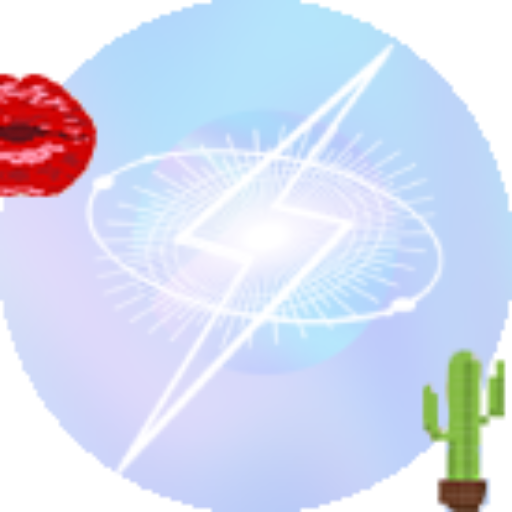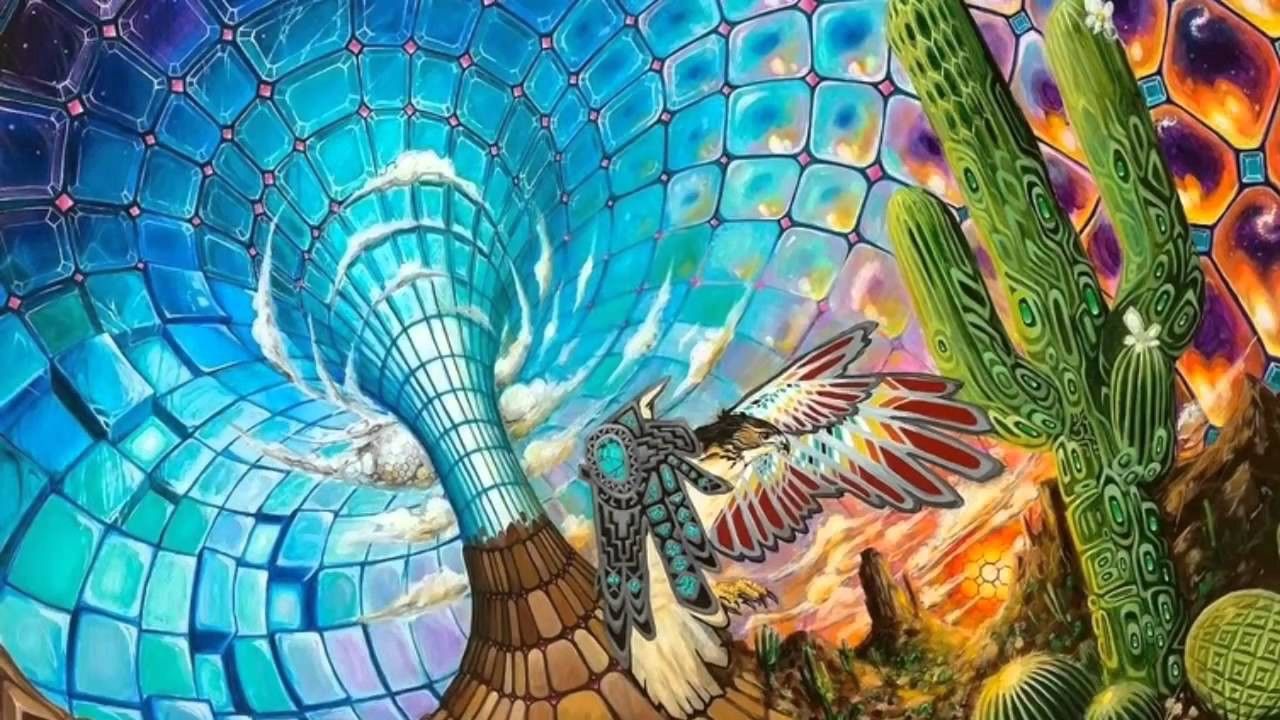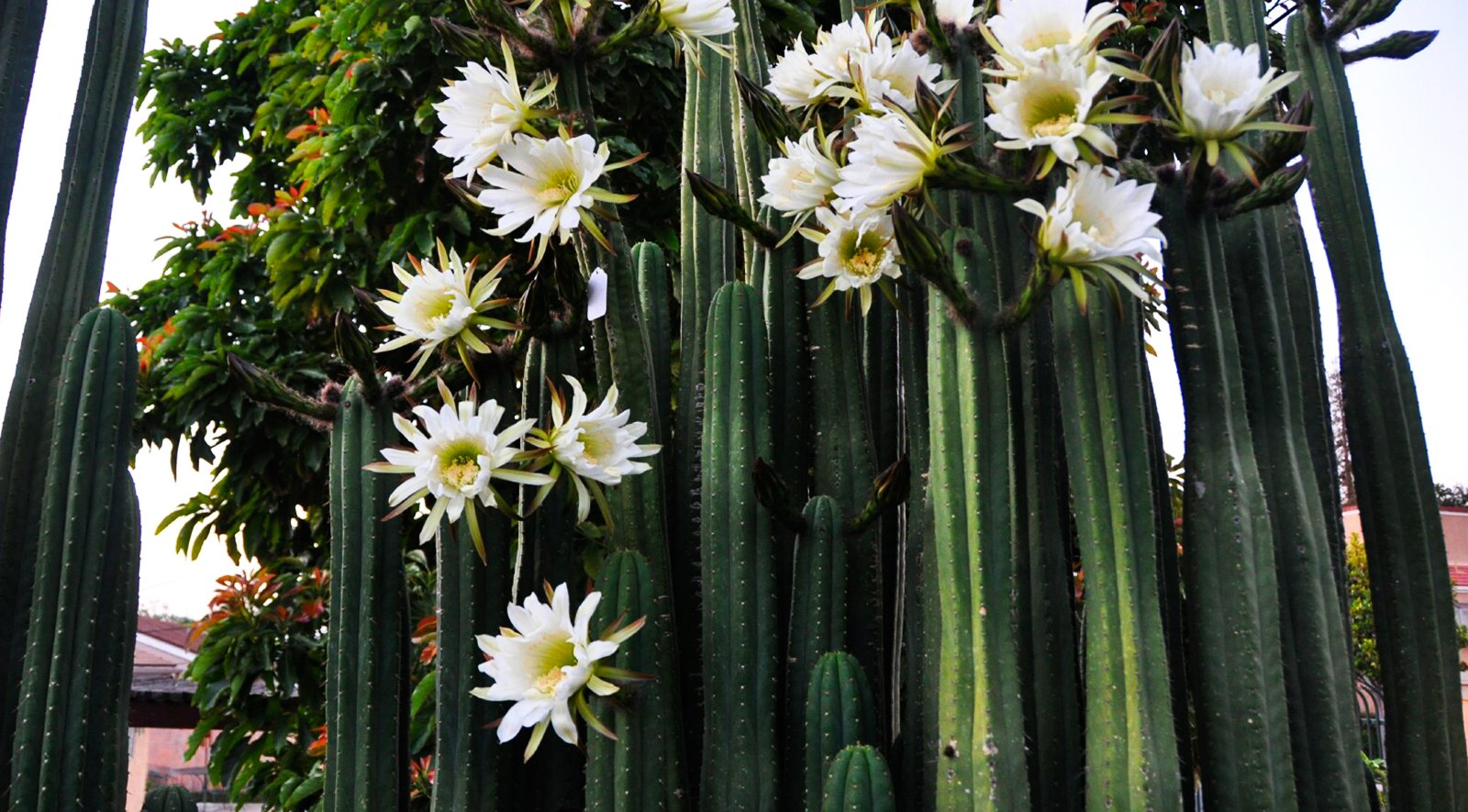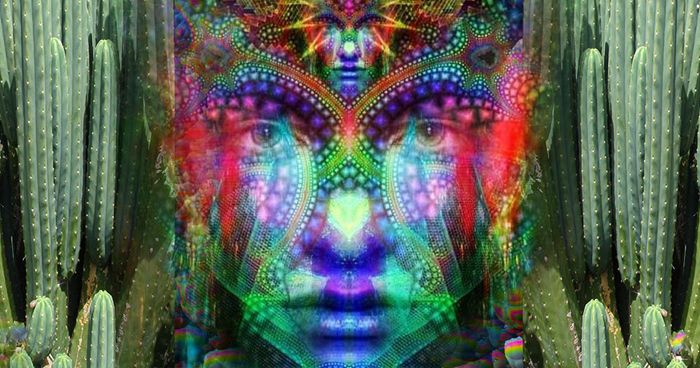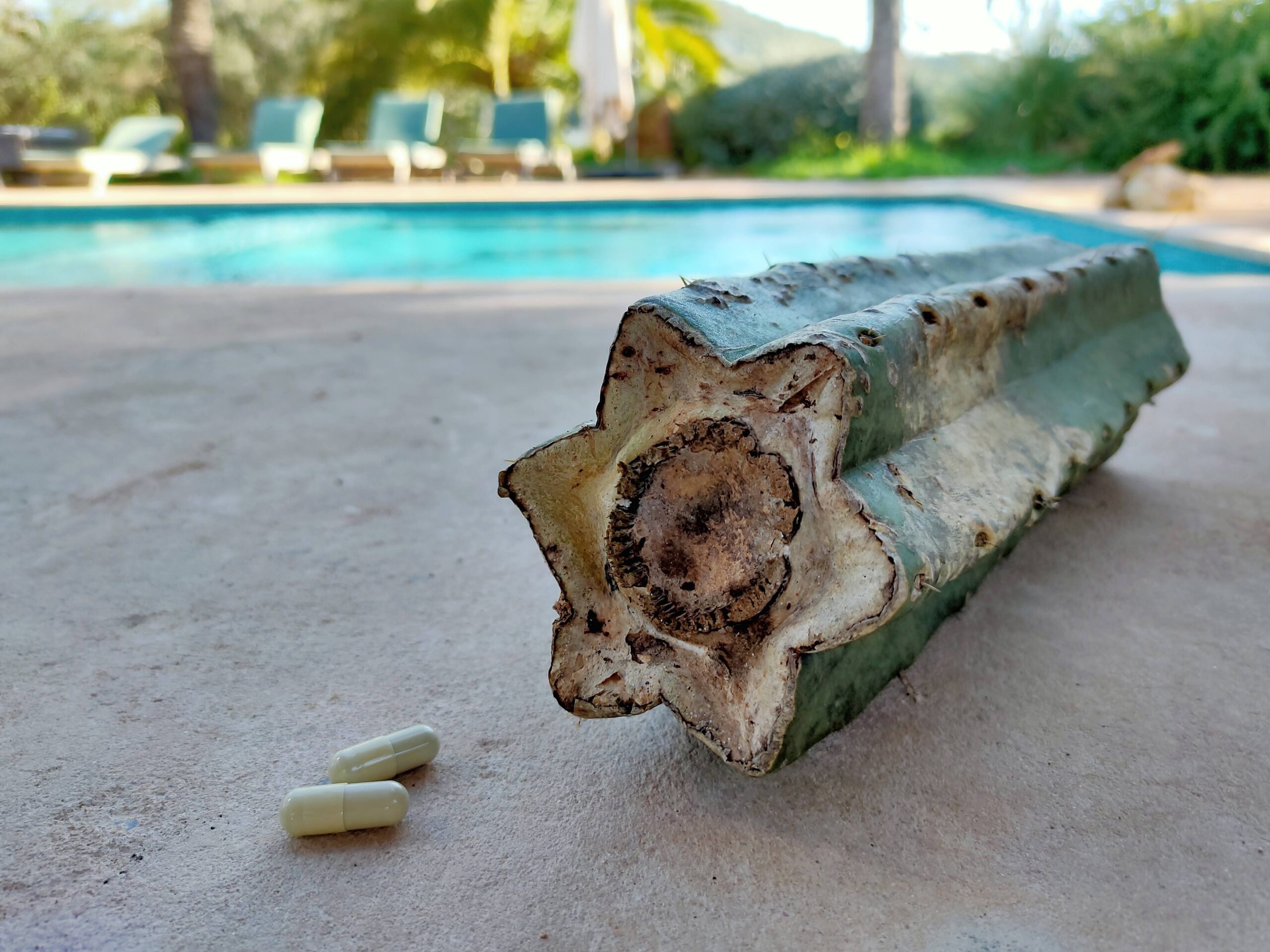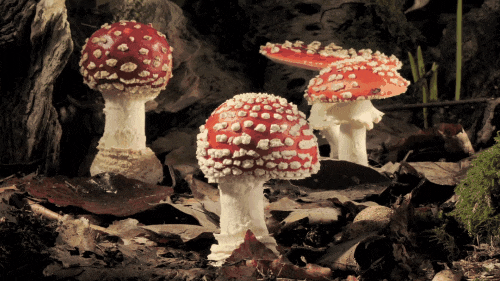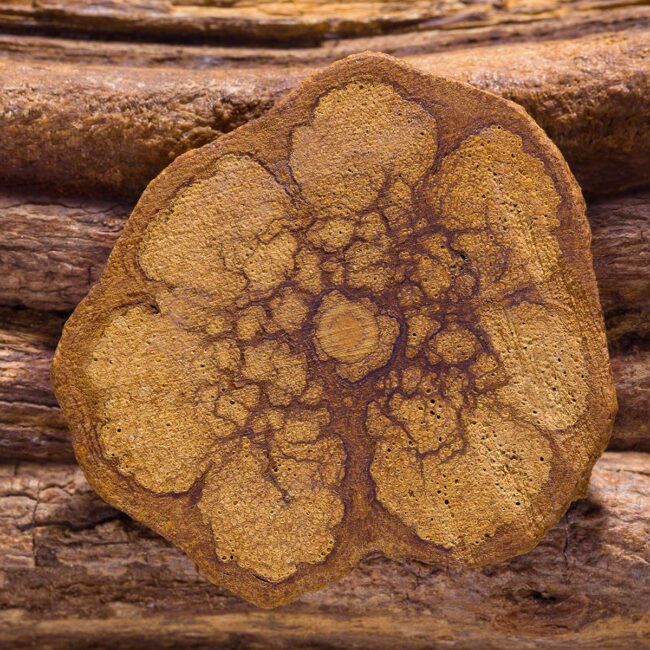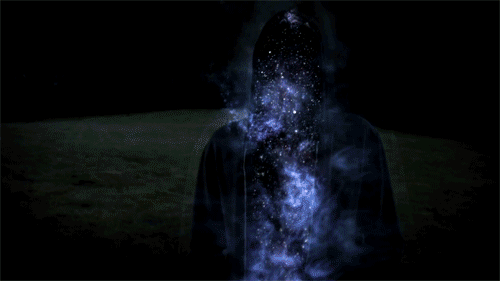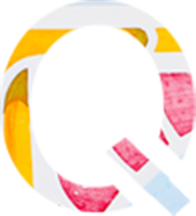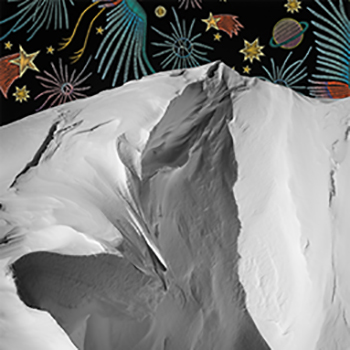San Pedro
THE KEYS OF HEAVEN
San Pedro cactus, the Cactus of the Four Winds, Huachuma or Saint Peter’s Cactus, native to the Andes Mountains, has being used for healing and religious divination for thousands of years. It is also believed that the name originates from Saint Peter, who is believed to hold the keys to Heaven.
Native to the Andean mountain range of South America, huachuma (Echinopsis pachanoi) has the potential to catalyze deep healing at many levels, both for individuals and societies. A “teacher plant” that has much to offer those looking for a profound entheogenic experience with powerful visionary and serotonergic effects.
Archaeological investigations in the Andes have found archaeological remains dating back to at least 6,400 BC.C in Cueva Del Guitarrero in Áncash. 11 In the Huaca El Paraíso Archaeological Complex in Lima in 2016, a 4,000-year-old cactus was found, possibly of the Echinopsis pachanoi species, about 30 centimeters long in an apparent good state of preservation.12 In the Chavín de Huántar ceremonial center a stone stela with the cactus in its iconography was found by the Peruvian archaeologist Luis Lumbreras in excavations at the beginning of the 1970s in the so-called Plaza Circular.
Looking to experience your life dynamics from a smoother and more gentle approach?
Huachuma is a tall columnar cactus related to Peyote (Lophophora williamsii) and contains the same psychoactive hallucinogenic ingredient (mescaline). Peyote is widely used by various tribes in Northern Mexico as well as the Native American Church in the United States to produce a visionary state where profound introspection takes place. While Huachuma has been off the radar for many people – even within the plant medicine world – the fact that Peyote cactus is endangered and hard to come by is opening up a new opportunity for Huachuma to play a key role in conscious evolution as a powerful psychedelic natural medicine.
“Huachuma contains mescaline, which is a phenethylamine and is chemically related to MDMA [ecstasy], while LSD, DMT [the main compound in ayahuasca] and psilocybin [the main compound in mushrooms] are in the tryptamine family.” He says, “So mescaline is unique among the major hallucinogens in that it is a phenethylamine.”
“Make no mistake, San Pedro can produce visions just like ayahuasca can… At lower doses, it has the feel-good happiness of MDMA, with a ‘shroom-like quality of feeling like a child while at the same time being slightly less scary, less jarring, and more loving than either aya or mushrooms.”
Because it is a bit gentler than many of the other plant teachers, huachuma has earned the nickname “The Grandfather” around the medicine community. Mescaline itself is nontoxic. And, while there are few studies done on huachuma itself, a Harvard Medical School study that investigated the long-term effects of regular peyote use among members of the Native American Church found “no evidence of psychological or cognitive deficits” at all.
Because of its unique pharmacology and gentle action, as well as its abundance and ease of preparation, huachuma is a standout for those who want to explore plant medicine for self-healing.
Opening the Pathways of the Heart
Like other classic psychedelics, mescaline-containing cacti have the ability to induce mystical experiences capable of catalyzing profound and lasting personality changes. Common mental health ailments like depression, PTSD, addictive behaviors, and anxiety disorders are all potentially treatable with these psychedelics.
From an indigenous perspective of illness, all disease has a spiritual component that can be treated in an effort to heal the physical element. Mescaline-containing cacti like San Pedro have been used in healing ceremonies for millennia, not only for spiritual ailments but also for physical diseases like cancer and paralysis and as topical treatments for inflammation and pain. But even in these cases, the spiritual aspect of the San Pedro ceremony plays a part in the healing process.
Cultural beliefs and group settings may also play a role in healing with San Pedro. Psychedelics taken in traditional settings and in nature have demonstrated enhanced therapeutic potential, especially with long-term integration. With this in mind, it is possible that aspects of the traditional San Pedro ceremony, held in a naturalistic setting, can uniquely complement psychotherapy by maximizing the psychological benefits of nature relatedness.
Drawing from the long history of psychedelic medicine ceremonies, some researchers today suggest it is worth revisiting this enduring power of communal ritual used in combination with mind-altering psychedelics. In this regard, San Pedro might one day be an easy-to-grow, safe-to-use option for community-based group therapy processes.
